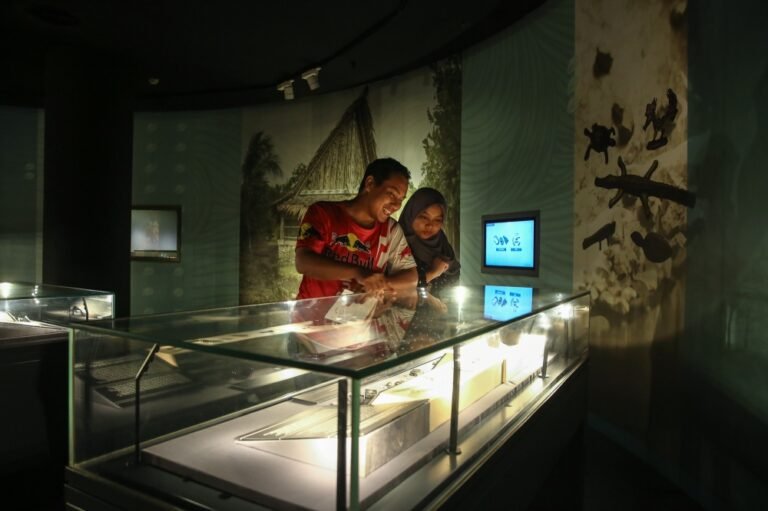KUALA LUMPUR, March 31 — An old Chinese proverb says: “The hardest steel comes from the hottest fire.”
When the Covid-19 pandemic was at its height in 2020, the Malaysian government introduced various quarantine measures including the widely known movement control order (MCO) to contain the pandemic.
For Bank Negara Malaysia’s (BNM) Museum and Art Gallery which largely relies on visitor engagement as part of its core operations, imposed restrictions on public gatherings came as a rude shock as the museum was ordered to close for the first time since its establishment in 2011.
Advertising
Advertising
“I will always remember this during the Covid-19 era, when we had to close the museum.
“That was the first time and we never had to close it. At that point, the first two weeks were okay but then we started getting restless after one month [of lockdown] on how we can continue educating the public.
“I think for most of us the closing of the museum was something unexpected and sad,” BNM Museum and Art Gallery deputy director Alnizah Shamsudeen told Malay Mail in an interview recently at Sasana Kijang where the museum is located.
Phase 1 of the MCO was officially implemented on March 18, 2020. The MCO would later be fully lifted in January 2022.
Indeed, the onset of the Covid-19 pandemic saw how different businesses and industries were forced to adapt to the worldwide crisis, and BNM Museum and Art Gallery was no exception.
“We were under great stress, but the passion to move on and explore something new surpassed everything we had achieved then,” the museum’s director Noreen Zulkepli said.
With quarantine measures heavily impacting its museum visitors, Alnizah said the museum made the bold decision to make use of available technologies to convert its galleries and exhibitions to virtual form.
“As they say, when there are challenges, there will be opportunities. If there was no Covid-19, I do not think we would have ventured into being virtual,” she said, adding that the team also took the downtime to upskill themselves with different skills.
Sharing further, Noreen recalled how the museum team had tried persuading the upper management to resume operations but all were met with rejection until they eventually relented to limited visitations when the MCO restrictions eased and later full visitations.
“It was a blessing in disguise. We learned two things, first as Alnizah mentioned we would never venture into virtual if not for Covid and we started receiving more visitors than before (pre-pandemic) after people started to get to know about us through social media,” she said.
In a more light-hearted moment, both women also shared how they started their curatorship careers and what inspired them to pursue the said profession.
Noreen, who possesses an economics background, shared how she started her curatorship journey, from volunteering at a local museum in the United States during her studies to staying with a foster parent who nurtured her passion for educating others, to finally starting as an assistant curator with BNM’s Museum and Art Gallery back in 2008.
As for Alnizah, the 43-year-old shared her statistical background and love for numbers, later reminiscing how supportive her family was towards her while having no prior experience in curatorship when she applied to join the museum team in 2017.
With the height of the pandemic now passed, Noreen stressed that the role of a museum has to evolve for the institution’s continued relevance and public importance in today’s technologically advanced society.
“We started with museums as a venue for people to visit but now we are looking at a museum’s role as a collaborative space of innovation and not just a gathering place to be visited.
“We have to ensure there is a dynamic discussion of topics that are related to the public,” she said of the central bank’s museum-curated contents that delve into the country’s finance and economics.
Despite general misconceptions that museums are merely places where forgotten objects go to enjoy their final years, both Alnizah and Noreen acknowledged such views have gradually changed over time.
For BNM’s Museum and Art Gallery, the greatest change post-pandemic saw a complete turnaround of its annual visitorship, much of its success attributed to the tenacity of the entire museum team under the leadership of Alnizah and Noreen.
The museum’s annual visitorship was roughly 180,000 people pre-pandemic, and that number has since increased twofold to roughly 400,000 people post-pandemic in 2023.
The museum recently celebrated its one millionth visitor milestone in January.
“In the past, we usually received visitations from school but now we have families with young children as well, that for me is a substantial achievement and that shows the impact [of our work].
“Those days people thought BNM’s museum is uninteresting because you are looking at economics, finance but I think people have changed their culture and perception that our museum is not just about the central bank but for everyone as well,” Noreen and Alnizah said.
Moving forward, Noreen said the museum has come a long way since 2011 when it had only had 20 daily visitors, and is now widely recognised as one of the best museums in the country if not the region.
“Getting to be recognised as the best central bank museum in the region is something we look forward to,” she said.
Apart from seeking further recognition, Alnizah said the museum is striving for collaborations with the Education and Higher Education Ministries to impart some of the museum galleries’ content into existing curriculum to educate students on the importance of financial literacy and management.
Read here for Malay Mail‘s story yesterday giving a glimpse into the custodians of Bank Negara’s Museum and Art Gallery.

